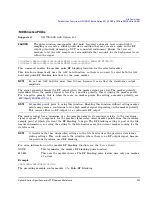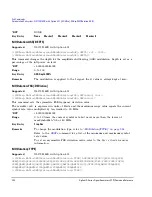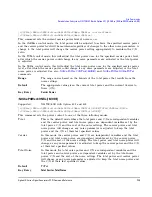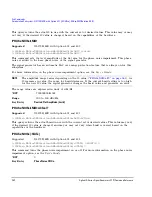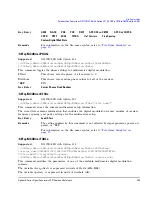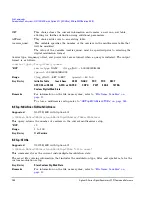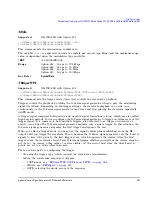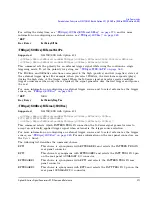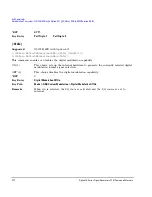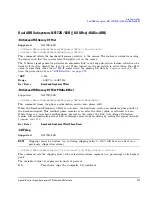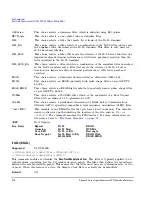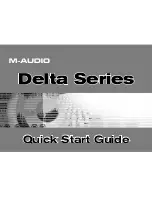
Agilent X-Series Signal Generators SCPI Command Reference
267
Arb Commands
Dmodulation Subsystem–N5172B/82B with Option 431 ([:SOURce]:RADio:DMODulation:ARB)
:SRATe
Supported
N5172B/82B with Option 431
[:SOURce]:RADio:DMODulation:ARB:SRATe <val>
[:SOURce]:RADio:DMODulation:ARB:SRATe?
This command sets the transmission symbol rate.
The variable
<val>
is expressed in units of symbols per second (sps–Msps) and the maximum range
value is dependent upon the modulation type and filter.
*RST
+1.00006
Key Entry
Symbol Rate
:TRIGger:TYPE
Supported
N5172B/82B with Option 431
[:SOURce]:RADio:DMODulation:ARB:TRIGger:TYPE CONTinuous|SINGle|GATE
[:SOURce]:RADio:DMODulation:ARB:TRIGger:TYPE?
This command sets the trigger mode (type) that controls the waveform’s playback.
Triggers control the playback by telling the X- Series signal generator when to play the modulating
signal (waveform). Depending on the trigger settings, the waveform playback can occur once,
continuously, or the X- Series signal generator may start and stop playing the waveform repeatedly
(GATE mode).
A trigger signal comprises both positive and negative signal transitions (states), which are also called
high and low periods. You can configure the X- Series signal generator to trigger on either state of the
trigger signal. It is common to have multiple triggers, also referred to as trigger occurrences or
events, occur when the X- Series signal generator requires only a single trigger. In this situation, the
X- Series signal generator recognizes the first trigger and ignores the rest.
When you select a trigger mode, you may lose the signal (carrier plus modulating) from the RF
output until you trigger the waveform. This is because the X- Series signal generator sets the I and Q
signals to zero volts prior to the first trigger event, which suppresses the carrier. After the first
trigger event, the waveform’s final I and Q levels determine whether you will see the carrier signal or
not (zero = no carrier, other values = carrier visible). At the end of most files, the final I and Q
points are set to a value other than zero.
There are four parts to configuring the trigger:
•
Choosing the trigger type, which controls the waveform’s transmission.
•
Setting the waveform’s response to triggers:
—
CONTinuous, see
“:TRIGger:TYPE:CONTinuous[:TYPE]” on page 268
—
SINGle, see
“:RETRigger” on page 263
—
GATE, selecting the mode also sets the response
Range
Option 653
50 sps to 37.5 Msps
Option 655
50 sps to 75 Msps
Option 656
50 sps to 50 Msps
Option 657
50 sps to 100 Msps

